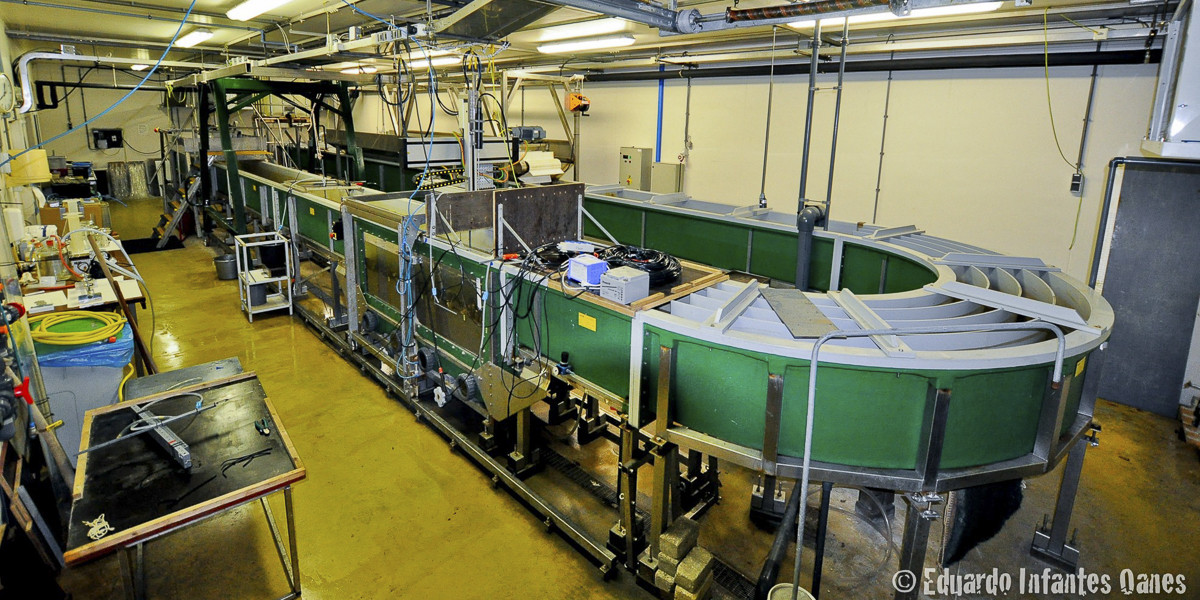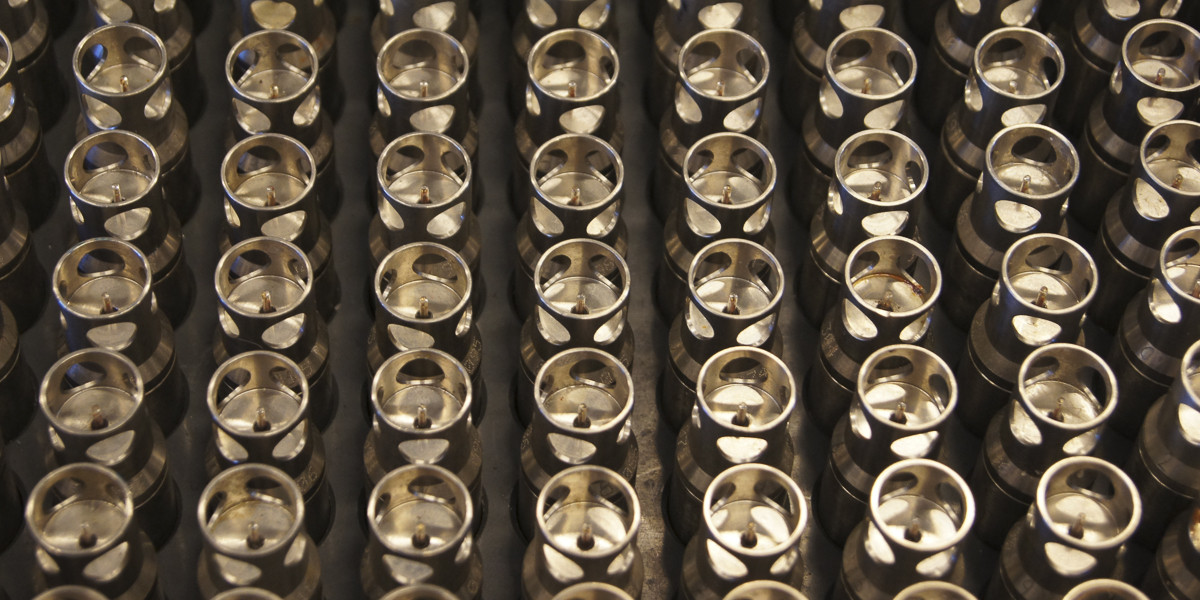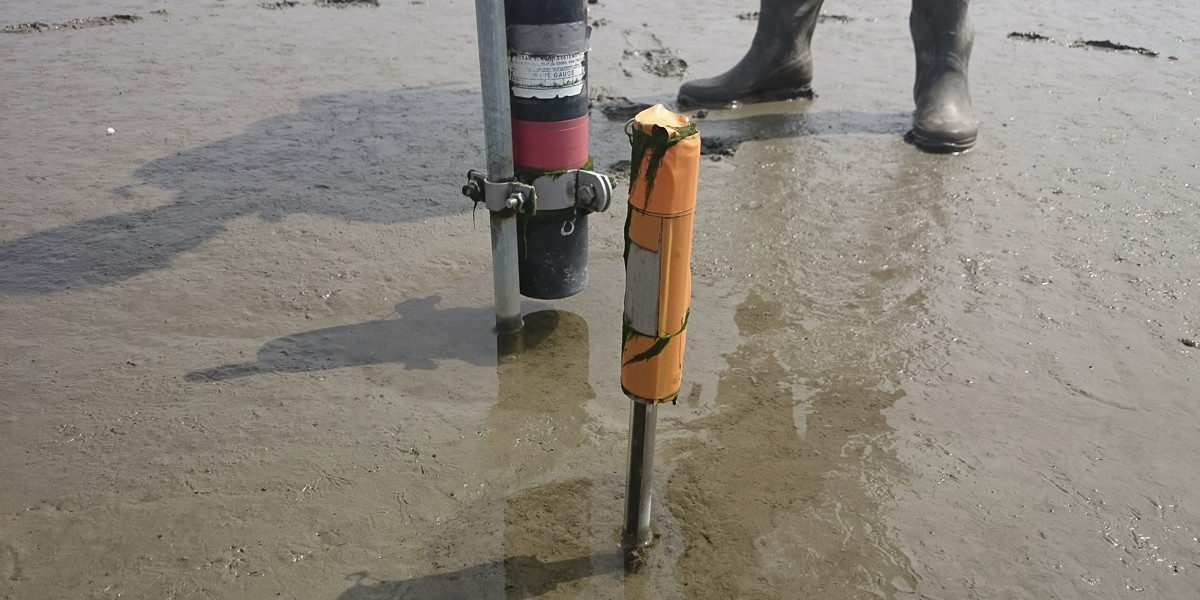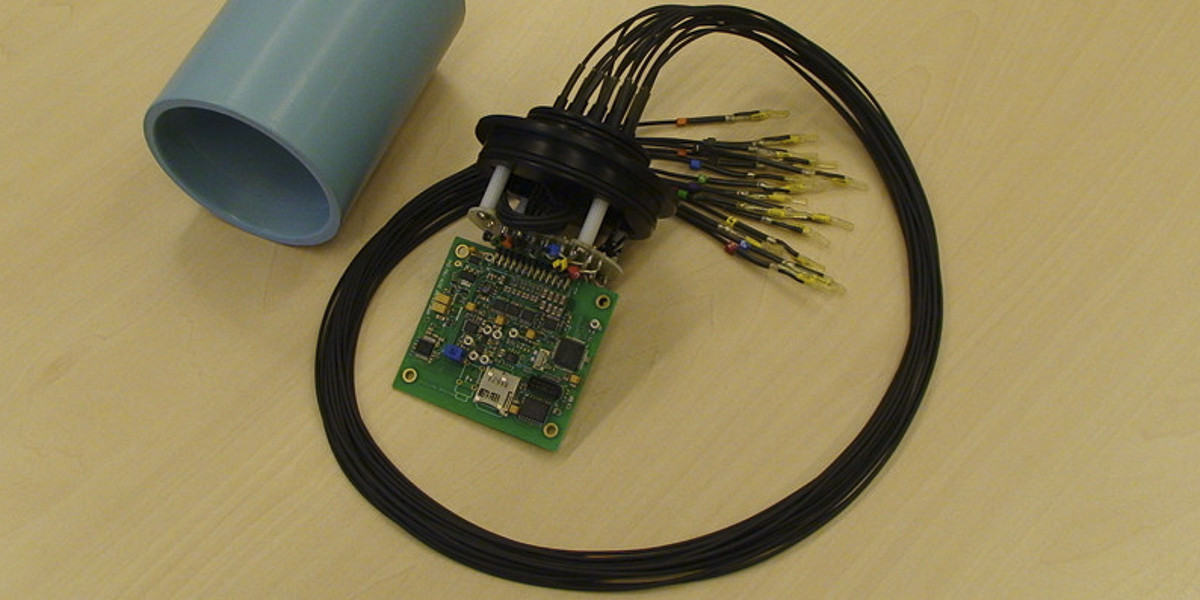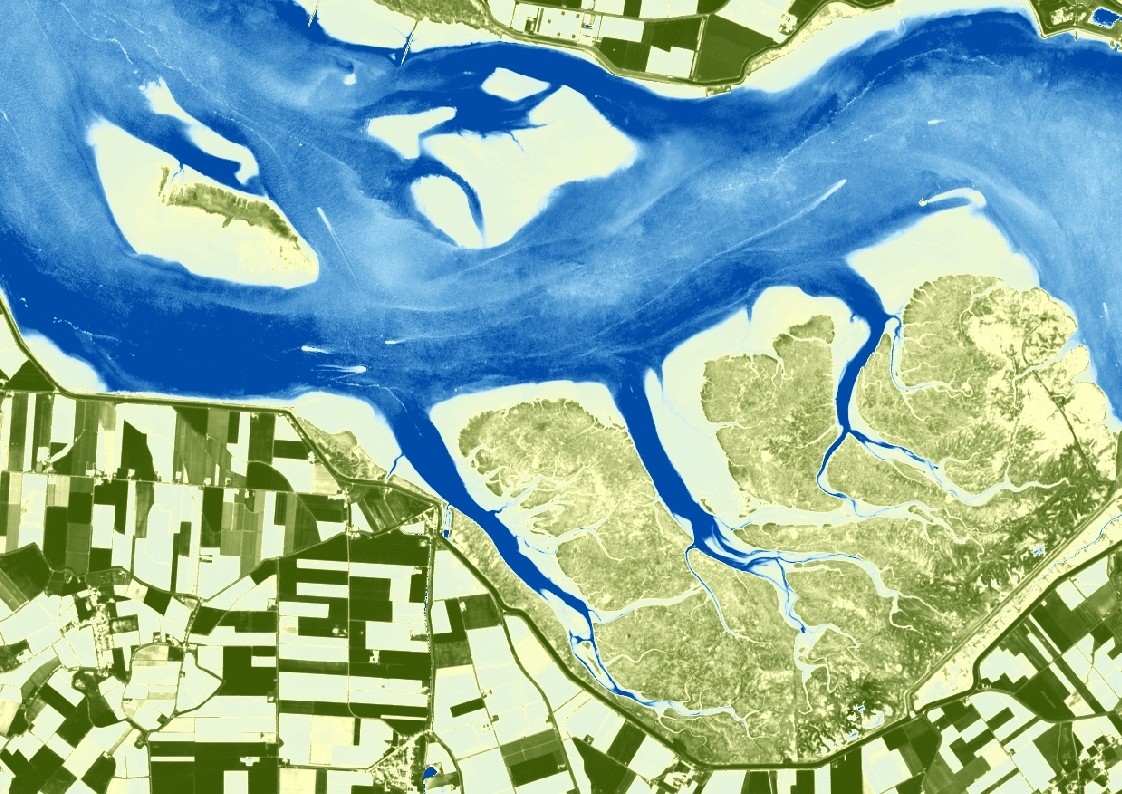Research Facilities
Flume and wave mesocosms
One way of investigating biophysical interactions is through flume studies: a flume is a system that allows controlling of physical forcing by generating currents or waves. Many flume systems are limited to the lab, where it is difficult to simulate the full complexity of an ecosystem. Therefore, at the EDS department, we are actively developing a series of field flumes. These will enable us to answer completely new research questions on the functioning and stability of physically driven intertidal and sub-tidal ecosystems. Our facilities are further explained here.
contact: Tjeerd Bouma +31 (0)113 577 454
Thermistor String
Following up his attempts to estimate internal wave band fluxes directly using ADCP and thermistor string, Hans van Haren developed a specialized instrument: the NIOZ Thermistor String. These sensors were developed for use in a vertical array of many O(100), to study dynamic processes like fronts and internal waves in shallow seas and deep ocean. Under conditions of sufficient vertical resolution O(0.1-1m), and temperature acting as a proper tracer for density variations, the sensors are excellent in estimating turbulance parameters generated by such processes.
contact: Hans van Haren +31 (0)222 369 451
The Sediment bed Elevation Dynamics (SED) sensor
The Sediment bed Elevation Dynamics (SED) sensor is a stand-alone device that can be applied for obtaining bed level dynamics. A continuous series of bed levels can be measured with a high temporal resolution (e.g. 1 measurement per minute). The sensor measures the light intensity over 204 light sensitive cells of 2 mm. The resulting vertical profile per time step over those 204 cells, is used to obtain the bed level per time step. A preliminary version of a script and workaround to process the measured raw data can be downloaded:
- Download the script (ZIP; 0,3 MB)
- Download the manual to analyse the raw data (PDF; 0.7 MB )
- Download the article about the SED sensor in Geomorphology (PDF; 1MB)
contact: Tjeerd Bouma +31 (0)113 577 454
Valve Gape Monitor
Bivalve shellfish filter water to obtain food and oxygen by keeping their valves open and generate a water current over their gills. They response to disturbance or a change in environmental conditions by changing the degree to which the valves are opened. Briefly stated: if a shellfish (e.g. a mussel) is happy, it’s valves are more often and wider open. Monitoring the mutual valve position of a clam over a prolonged time provides insight in the environment the shellfish is in. The request of the biologists was to develop a valve gape monitor for eight bivalves which can run and store data autonomously for months on only a few alkaline batteries. A further request was that the method was minimally intrusive. The solution chosen for the measurement is to measure the electric field between to micro coils. This meant that two small coils with wires need to be glued to the valves. Experiments showed that these wires didn’t disturb the normal behaviour of different shellfish species which were tested (jack-knife clam, blue mussel, cockle). The Valve Gape Monitor (VGM) design functions already perfect for several years. The only real wear of the system concerns the wires. The system now uses 16 wires (2 per shellfish). A new system that only uses 8 wires is now under development while at the same time a researchers’ wish to be able to extract the collected data wireless is taken into account. This new design is planned to be fully tested operational before the end of this year.
Contact (scientific): Rob Witbaard +31 (0) 113 577 462 / +31 (0) 222 368 537
Contact (technical): Walther Lenting +31 (0) 222 368 342 / +31 (0) 650 286 741
Remote sensing
Earth observation techniques enable us to identify spatial patterns and elucidate processes in estuaries, deltas, coasts, seas and oceans. NIOZ has the know-how and the instruments (such as spectroradiometers, UAV’s/drones, cameras) and processing facilities to obtain information from optical, radar/SAR and TIR satellite images, near-surface and airborne remote sensing data, and in situ hyperspectral spectroradiometry.
Contact: Daphne van der Wal +31 (0)113 577300
